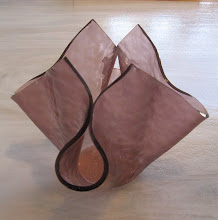Does the use of stained glass in churches hold the same relevance it did in the middle ages? Does it change or enhance the worship atmosphere of the church?
In the Middle Ages stained glass was used to teach the congregation Bible stories, incorporate narratives, depict Saints, or episodes from the life of Christ.
In the twenty-first century we are relatively well read and truly don’t require pictures to understand religion. But do we think of stained glass pictures as an essential part of our church building? Are they the catalyst that actually makes a building a place of worship?
Many churches have used stained glass to achieve both a spiritual atmosphere and retain privacy. Some people feel a stronger sanctuary in their church when the light streams in through beautiful coloured glass and the rest of the world--traffic, tall buildings and all-are away from view, even for a short time.
Others will say that the church is in their hearts and minds and not in the building trappings at all.
Churches today face economic hardships which may influence whether its architecture is stark and modern, has many stained glass windows or just enough pane windows to provide light. An option for easing the cost of stained glass is the use of donated panels in memory of loved ones. This gesture helps to ease the financial burden and assists to further bond the congregation.
It not only provides tranquil, beautiful windows, but also serves as a reminder of cherished loved ones who have gone before us.
There are also more options for the creation and production of these beautiful works of art. In some cases, new or displaced churches rely on rented halls or small office units. Stained glass windows can be made not only to custom fit windows, but are removable at the same time. When the congregation moves to a permanent building, the windows go with them making them feel right at home again.
It is truly an individual preference if churches have stained glass windows. It would be fair to say that most people associate stained glass with churches. A great deal of artwork and photography depict stunning images of the buildings with either the light streaming in or out of the stained glass windows.
Some worshipers feel that when they are seated inside, the rich colors enrich the quiet, contemplative nature of the church, bringing the spiritual atmosphere alive. Stained glass windows go hand in hand with hymn books, organs and the pulpit to make the difference between an office building and a church.
Although it is true that stained glass doesn’t hold the same teaching relevance it was meant for 100 years ago, it strongly maintains a recognized value and sentimentality in modern society.
It’s still just as important that the light shines in!
Sign up to receive Trickett Glass Newsletter and receive a FREE ebook, "Stained Glass From Hobby to Business".

